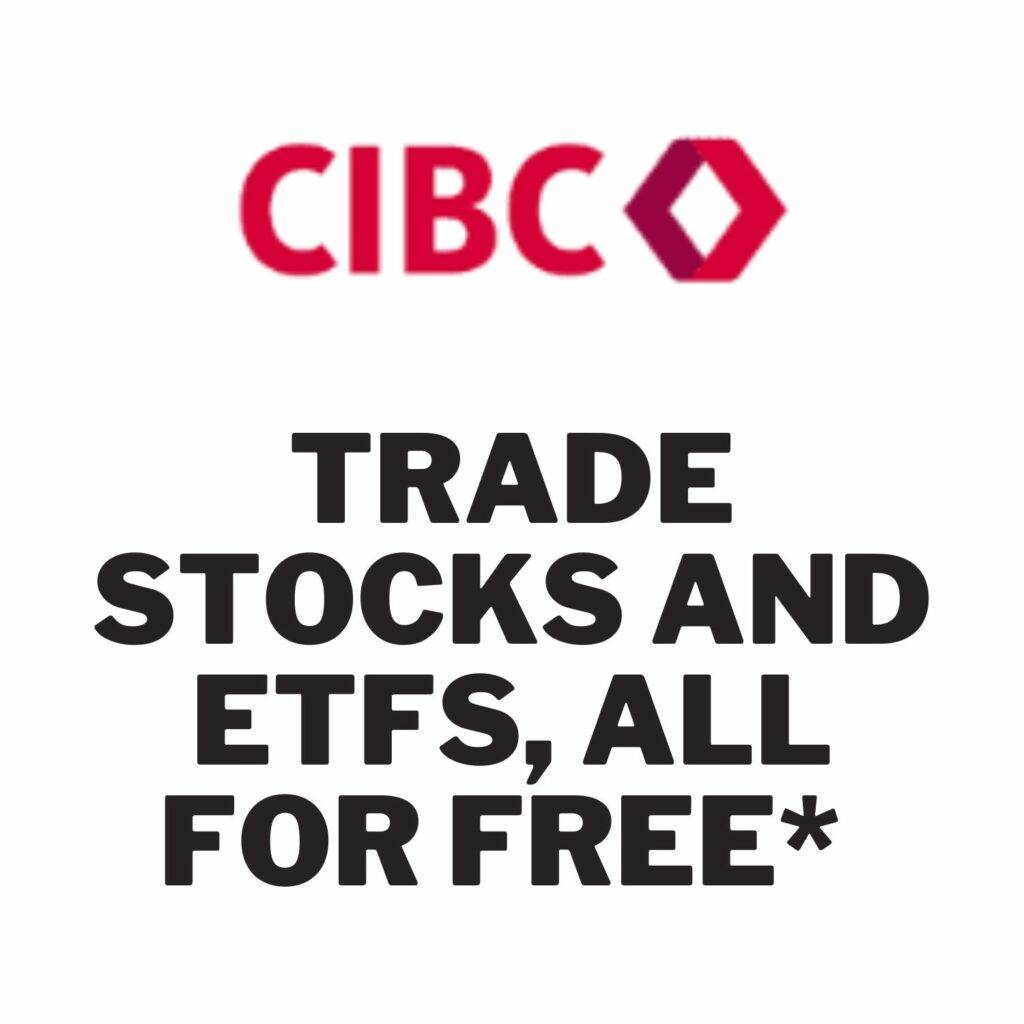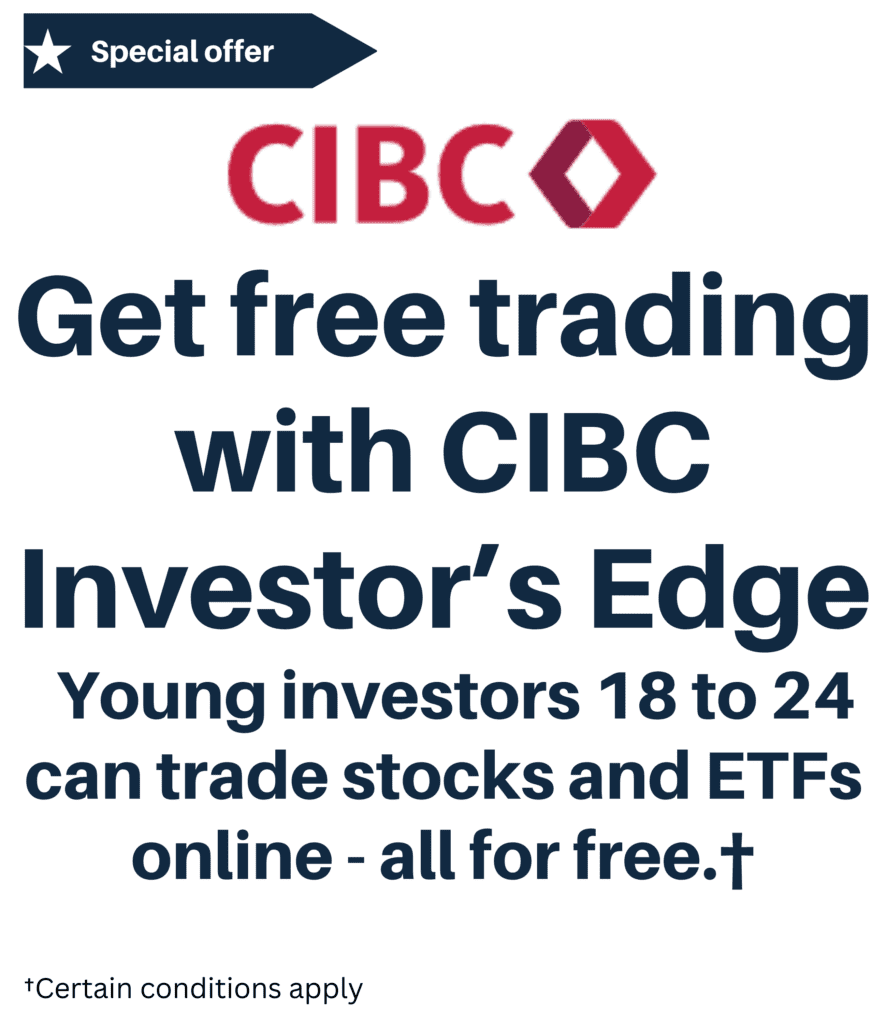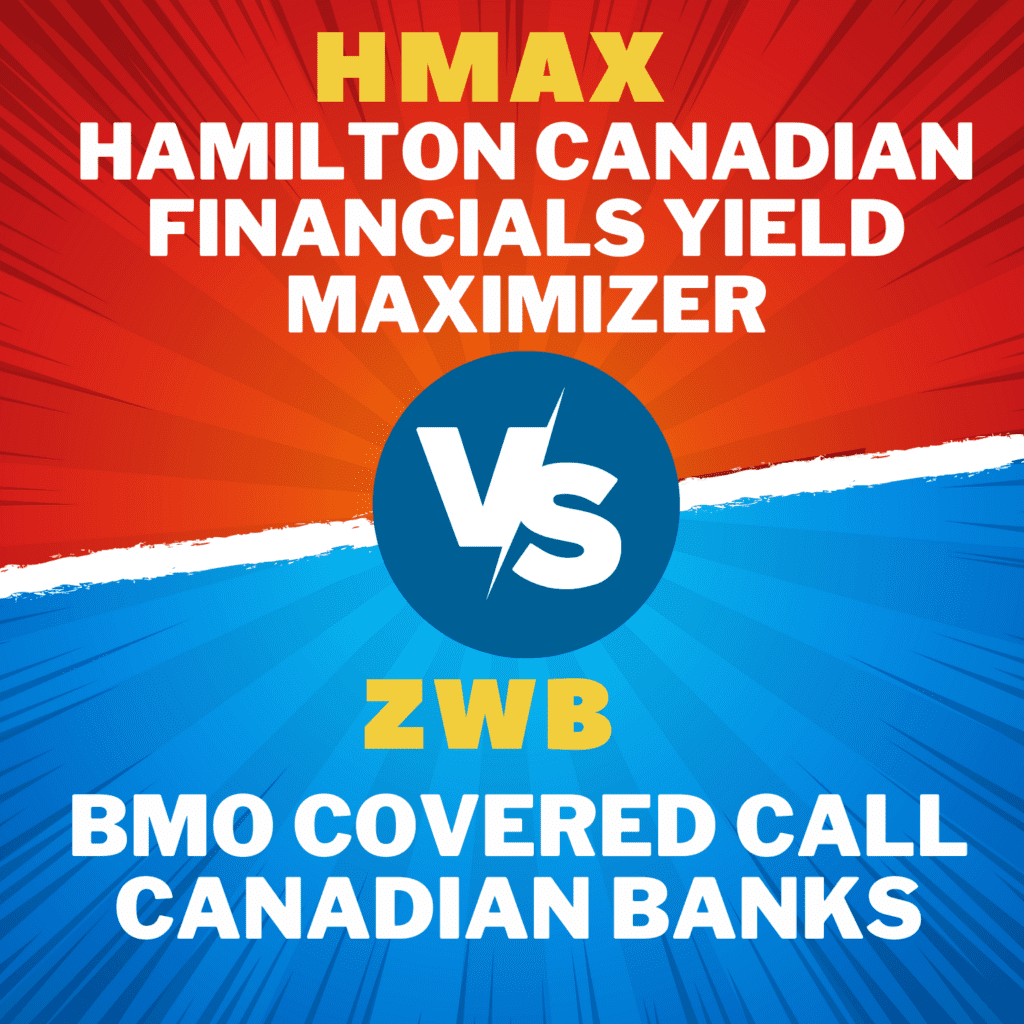ZWB vs HMAX
Investment Objective
HMAX – Hamilton Canadian Financials Yield Maximizer
HMAX ETF is a new fund offered by Hamilton ETF. The fund invests in the Canadian banking sector. This fund aims to provide an attractive dividend yield (target 13%) using a covered call strategy. The strategy consists of writing call options on (50% of the portfolio) to collect premiums and maximize monthly distributions.

ZWB – BMO Covered Call Canadian Banks
The ZWB ETF aims to provide exposure to a portfolio of dividend-paying securities (Canadian Banks), while collecting premiums related to call options. The portfolio is chosen on the basis of the criteria below:
• dividend growth rate, yield, and payout ratio and liquidity.
Strategy
Covered call strategy – HMAX vs ZWB; *13% is the target yield
ZWB, representing the BMO Covered Call Canadian Banks ETF, allocates 50% of its portfolio to an out-of-the-money (OTM) option strategy. With this approach, ZWB sells OTM call options on 50% of the stocks in its portfolio. The OTM strategy places a cap on the return of the written positions at the option strike price until the option expires. This conservative strategy is designed to provide investors with a dividend yield ranging from 6% to 7%.
On the other hand, we have HMAX, the Hamilton Canadian Financials Yield Maximizer ETF, which also utilizes a covered call strategy but with a different twist. HMAX allocates 50% of its portfolio to an at-the-money (ATM) option strategy. In this case, HMAX sells ATM call options on 50% of the stocks in its portfolio. The ATM strategy entails selling call options with a strike price close to or equal to the current stock price. This aggressive approach aims to target a more substantial dividend yield of 13%.
The table clearly outlines the distinct attributes of each ETF, including their respective portfolio allocations, option strategies, and dividend yields. While ZWB follows a more conservative OTM strategy, offering a moderate dividend yield of 6% to 7%, HMAX embraces a higher-risk ATM strategy, potentially providing investors with an attractive dividend yield of 13%.
What’s the difference between ATM, ITM and OTM options
Table
| Strategy | Premium or option price | Risk | Reward |
| ITM (In the money call option) Stock price > Strike price | High | High | High |
| OTM (Out of the money call option) Stock price < Strike price | Cheap | Low | Low |
| ATM (At The Money call option) Stock price = Strike price | Medium | Medium | Medium |
The table presents a comparison of different call option strategies based on their premium or option price, as well as the associated risk and reward profiles. These strategies include ITM (In the money call option), OTM (Out of the money call option), and ATM (At The Money call option).

ITM (In the money call option):
When the stock price is greater than the strike price, the call option is considered “in the money.” This strategy offers a higher premium or option price, which means it can be relatively more expensive to purchase. However, the increased premium comes with potentially high risk and high reward. Investors opting for ITM call options are exposed to higher risk due to the substantial investment required upfront. On the other hand, the potential for significant rewards is also high if the stock price continues to rise, making it an attractive choice for those seeking substantial gains.
OTM (Out of the money call option):
When the stock price is lower than the strike price, the call option is considered “out of the money.” The OTM strategy offers call options at a cheaper premium or option price, making it more affordable for investors. However, the risk associated with OTM call options is relatively low. This is because the chances of the option expiring worthless are higher, as the stock price needs to surpass the strike price to become profitable. Consequently, the potential reward is also lower compared to ITM call options.
ATM (At The Money call option):
ATM call options come into play when the stock price is equal to the strike price. This strategy offers a medium-level premium or option price, making it a balanced choice between the high premium of ITM and the low premium of OTM call options. Similarly, the risk and reward profiles are also medium, striking a balance between the potential for gains and the chances of option expiring worthless.
Portfolio allocation – ZWB vs HMAX
| ETF | Big Can Banks | Insurance | Asset Management |
| HMAX | 76.4% | 14.9% | 10% |
| ZWB | 100% | – | – |
The table provides a clear breakdown of the asset allocation within two Canadian ETFs: HMAX and ZWB. Both ETFs focus on the financial sector, offering investors exposure to various segments of the industry, including big Canadian banks, insurance companies, and asset management firms.
HMAX (Hamilton Canadian Financials Yield Maximizer ETF):
HMAX allocates its portfolio predominantly to big Canadian banks, accounting for 76.4% of its assets. This heavy concentration in the banking sector reflects the fund’s emphasis on major financial institutions in Canada. Additionally, HMAX allocates 14.9% of its assets to insurance companies, indicating a well-diversified approach within the financial sector. Moreover, HMAX dedicates 10% of its assets to asset management firms, further broadening its exposure to various financial industry segments.
ZWB (BMO Covered Call Canadian Banks ETF):
In contrast to HMAX, ZWB focuses exclusively on big Canadian banks, representing 100% of its asset allocation. This indicates a more concentrated approach within the financial sector, with a sole emphasis on Canadian bank stocks. By exclusively focusing on banks, ZWB aims to provide investors with exposure to this specific segment of the financial industry, offering opportunities for income generation through its covered call strategy.

